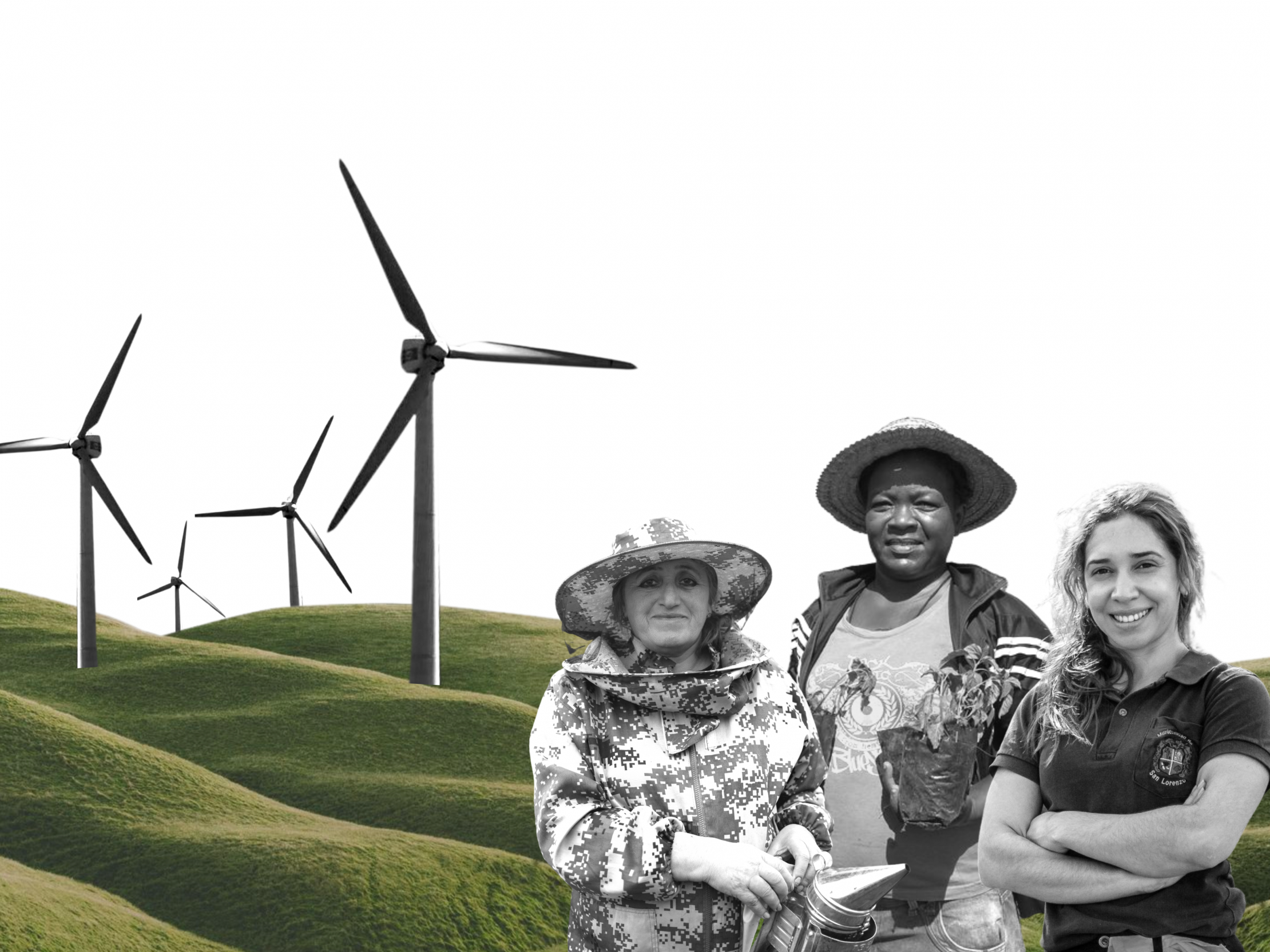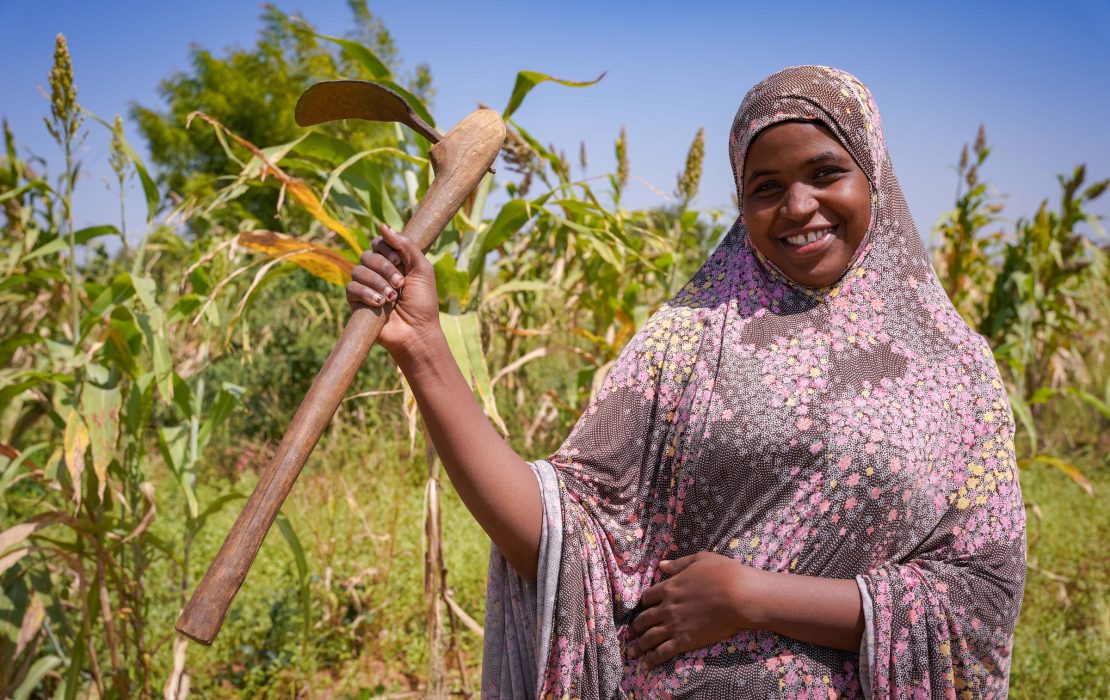
Why does gender equality matter when it comes to climate action?
While climate change is a threat for everyone, it does not affect everyone equally. The impacts of climate change perpetuate and magnify structural inequalities, such as those between women and men. This is especially true in many parts of the world where women rely on climate-sensitive work like agriculture and manual labour to make a living.
The climate crisis, just like nearly every other humanitarian and development challenge, has a greater impact on women. This is due to the unequal sharing of power between women and men, the gender gap in access to education and employment opportunities, the unpaid care burden, prevalence of gender-based violence, and all other forms of deep-rooted gender-based discrimination.
For example, women play a significant role in agricultural production, but often do not have equal access to agricultural resources and services or official decision-making processes concerning agriculture and climate change. According to one estimate, if all women smallholders received equal access to resources, their farm yields would rise by 20 to 30 percent, 100 to 150 million people would no longer go hungry, and carbon dioxide emissions could be reduced by 2.1 gigatons by 2050 through improved farm practices.
Even though a third of women’s employment worldwide is in the agricultural sector, women represent only 12.6 percent of landowners. This lack of control over resources translates into women receiving only 10 percent of total aid for agriculture, forestry, and fishing. It also means increased vulnerability, as women experience lower access to information about adaptation technologies, cropping patterns, and weather events. Giving women increased access to resources can reduce vulnerability and create more resilient households and communities.
In addition, involving women in decision-making can help drive the adoption of climate change policies and strengthen mitigation and adaptation efforts by ensuring they benefit the needs of women.
But often, women’s participation in decision-making and their climate leadership potential is hindered by their unpaid care responsibilities. Across the world, women carry out more than 75 percent of unpaid care work, or 3.2 times more than men. When climate-induced disasters hit, this figure only increases as women take on additional burdens to help their households and communities recover and rebuild.
Climate-induced stressors can also impact access to education and the labour market for women and girls, increasing the time they must spend on household chores and therefore perpetuating a cycle of disempowerment. Moreover, in the aftermath of climate-induced disasters, women and girls can be more vulnerable to gender-based violence and therefore need access to quality services essential for their safety and recovery, as well as seats at the decision-making table.
These are some of the reasons why long-term climate solutions cannot be achieved without pushing for gender equality and women’s empowerment and leadership. Now, more than ever, it is imperative to put gender equality at the heart of climate action.
How can gender equality help address climate action?
For climate solutions to be effective, they must consider gender equality and women’s empowerment throughout.
A crucial step to assessing how the impacts of climate change impact women and men differently is conducting a gender analysis. This helps identify where inequalities and gender gaps exist and where to take relevant measures. Once we better understand the relative distribution of resources, opportunities, constraints, and power in a given context, we can then develop more effective, evidence-based climate policies and actions, addressing the needs of women and girls, as well as men and boys.
When developing and implementing new climate policies, we must ensure that men and women equally benefit from budgetary allocations to climate action. This enables everyone to employ their skills and leadership to respond to the crisis.
In return, climate policies that are synergized and integrated with gender equality objectives are more successful at achieving the deep transformations required to tackle the climate crisis and ensure social justice.

What are some examples of climate action work that have considered gender equality?
Building women’s capacity is very important to ensure their inclusion in formulating new climate policies and to close the gender gap in climate decision-making. For example, Bhutan has trained Gender Focal Points within different ministries as well as women’s organizations to enable them to coordinate and implement gender equality and climate change initiatives.
Given the barriers and existing inequalities that women face in access to resources, credit, technology, jobs, and economic opportunities, new financing mechanisms can enable women to better contribute to climate action. For example, Zimbabwe is establishing a renewable energy fund that will create specific entrepreneurship opportunities for women. In Uzbekistan, a pilot green mortgage scheme helped rural households in 5 regions access affordable low-carbon energy technologies. Because of the scheme’s gender-responsive criteria and targeting, 67 percent of mortgages were taken out by women-headed households. Increasing the gender-responsiveness of climate finance is a win-win, improving the effectiveness, efficiency, and sustainability of investments while also increasing women’s empowerment and resilience.
Countries also need to be accountable about their gender equality progress and outcomes for women and men, and they need to assess how gender-responsive their climate interventions are. For example, Uruguay has established a gender-responsive monitoring, reporting and verification system to track how Nationally Determined Contribution (NDC) programming is supporting gender equality and women’s empowerment. The system was improved and relaunched in 2021.
National ministries that have a mandate to support gender equality need to be present and actively participate in coordination around NDC implementation and in decision-making related to climate impacts and action more broadly. In Cabo Verde, the Institute for Gender Equality and Equity, a supporting agency across numerous sectors, leads on defining specific needs, targets, and indicators related to gender mainstreaming in climate action across all industries and intervention areas.

Which countries are making progress on gender equality when it comes to climate action?
Countries such as Chile, Uganda, Lebanon, Cambodia, and Georgia are making progress on strategically integrating gender considerations in climate action in the context of delivering their NDCs.
In recent years, Chile has worked to further integrate gender dimensions into the revision and implementation of its NDC. A major outcome included the creation of the Gender and Climate Change Roundtable, which developed a checklist to incorporate gender issues in climate change instruments. Chile, through the Ministry of Finance, has also been working on developing a new methodology for assessing public budgets focused on climate change expenditure through a gender lens.
Uganda and Lebanon are two countries that have undertaken gender analyses, while revising their NDCs, to better understand how climate change impacts women and men differently and to assess the gender gaps in the implementation of mitigation and adaptation actions in key sectors. For example, the Lebanon analysis provided entry-points to increase the gender-inclusiveness and responsiveness of climate change policies, strategies, planning and reporting aspects and has informed the document How to put Gender-responsive Climate Solutions into Action: Lebanon’s Approach, a framework for mainstreaming gender in climate action.
Cambodia’s NDC included gender as a key criterion for prioritizing mitigation and adaptation actions. This led to most NDC priority actions having targets for women's participation that ranged from 15 to 70 percent. In addition, the NDC goes a step further to suggest gender-responsive approaches that facilitate women’s meaningful participation in specific climate measures and provides indicators to measure this change.
Moving to the implementation of its NDC, Georgia developed a guide on mainstreaming gender in climate change interventions that is now available for all civil servants working on environmental issues. The guide explains how climate change has a disproportionate impact on women and girls and identifies gender-responsive activities that can be employed in key sectors affected by climate change such as agriculture, forestry, energy, transport, construction, and industry.
What are some of the major challenges when trying to integrate gender considerations into climate action?
In the first round of NDCs, starting in 2015, gender equality was only vaguely addressed, without specific actions and policies being put forward by most countries.
This made apparent the challenges faced by many countries in integrating gender considerations in their climate policies and action plans. One of the main problems was the lack of gender-disaggregated information and data, during the development of the NDC, which limited the understanding and evidence base of how climate impacts vary between women and men.
In addition, the limited participation of women’s groups and other civil society organizations in climate change policy processes has meant that climate action planning is not always gender-responsive. Consulting women’s organizations and including them in planning and decision-making can help ensure that climate action is gender-responsive by providing targeted measures to address the specific needs and vulnerabilities of women and men.
The lack of gender dimensions in the first generation of NDCs underscored the need to support countries to translate gender equality intentions into concrete actions and policy. To address these issues and establish a stronger foundation for progress, UNDP’s Climate Promise developed a multi-pronged approach that focused on strengthening gender-responsive climate action in three core areas: 1) effective governance, 2) inclusive planning, and 3) integrated policy frameworks. The Climate Promise also promoted the use of in-depth gender analyses as a tool to understand the roles that women and men play in priority NDC sectors, the structural inequalities women face regarding climate action, and the opportunities that exist to empower women’s participation in climate solutions.
This approach built on existing efforts to pursue more systematic gender mainstreaming within the five-year cycle of NDC revisions and led to a significant improvement in the quality of NDCs from 2015 to 2020-2021. Now, 95 percent of NDCs contain a reference to gender compared to 47 percent in 2015, while 52 percent of revised NDCs include gender-responsive adaptation measures compared to only 11 percent in 2015.
Despite these gains, gender equality progress is always at risk from changes in the political, economic, and social contexts. To accelerate the gender-responsive implementation of NDCs and avoid backsliding on any development gains, a range of policy, governance, and finance barriers still need to be addressed. This requires improved coordination mechanisms between ministries with a focus on building institutional capacities on gender-responsive climate action.
The challenge for the next few years will be to help governments shift systems and power structures that deepen gender inequalities and hold back women leadership as they work on bolstering climate mitigation and adaptation.
Moreover, while the case for steering climate finance towards gender-responsive climate action is clear, it needs to be more widely known and understood. Inequalities impose development costs on the whole-of-society, more so as people struggle to contend with climate change impacts.
Without gender equality, there is little hope of meeting the necessary transformation required to address climate change and ensure a sustainable and just future for all.
Editor's Note: If you found this piece useful, sign up for our monthly climate newsletter to get more explainers and climate news delivered directly to your inbox.

